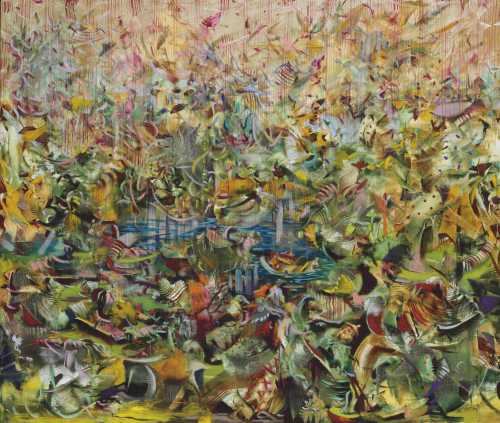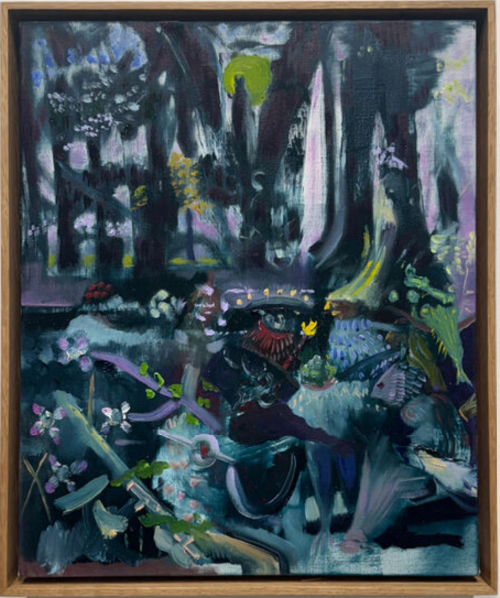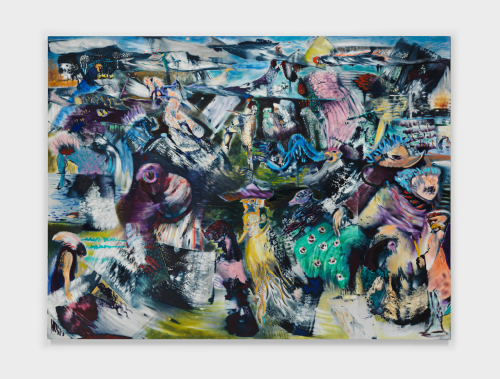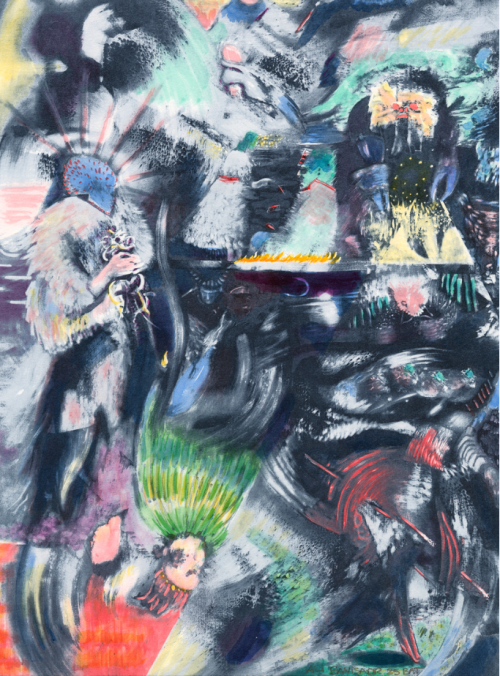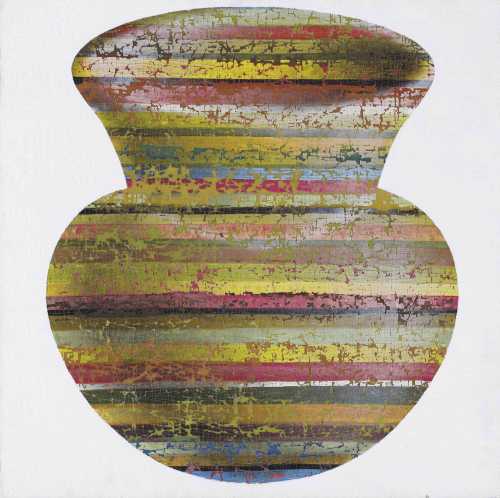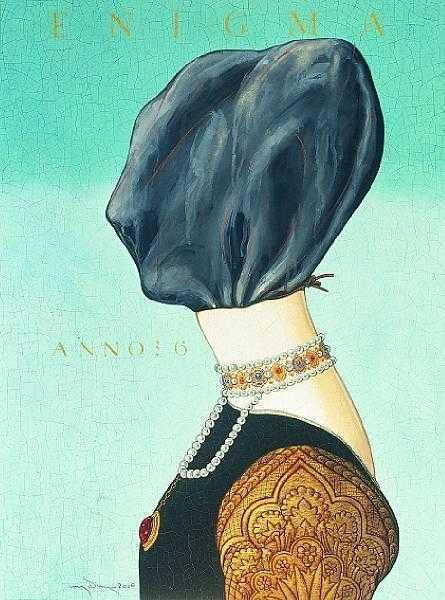- Divine Wind 2012
- oil on linen
- Painting
- 91.4 * 76.2 cm
- signed and dated 'ALI BANISADR 12' (lower right); signed and dated 'ALI BANISADR 2012' (on the overlap)
Artwork Description
The fantastical landscape depicted by the young artist Ali Banisadr in Divine Wind condenses his own imagery and recalls his childhood memories. Through the use of a bright palette, large brushstrokes and a gestural composition, Banisadr not only evokes his chaotic memories of displacement and war but also reveals his various artistic influences. Originally from Tehran, Banisadr left the country at a young age along with his family to settle in the United States where he currently lives and works. He carried along his memories of the Islamic Revolution followed by the Iran-Iraq war and on the canvas, Banisadr soon projected the sense of anarchy and carnage he felt during those years. The shattered composition and the many contrasts within his oeuvre bring to life an abstract scenery of sound and movement embellished by many detailed figures.
Divine Wind is by all means reminiscent of historical art movements such as German expressionism and Italian Futurism: it manifests beautifully the artist's recollections of nostalgia and violence. Banisadr captures the brutality of the war and the human evil with a painterly style shaped by his exposure to popular culture, graphic arts and Western painting. His painting provides a bitting commentary on the troubled dark side of the human condition in the 21st century. Divine Wind is an outstanding composition which appeals to each of our human senses. Ali Banisadr is amongst the most sought after artists of today's contemporary art and the present work is a stunning example of his oeuvre.
Divine Wind is by all means reminiscent of historical art movements such as German expressionism and Italian Futurism: it manifests beautifully the artist's recollections of nostalgia and violence. Banisadr captures the brutality of the war and the human evil with a painterly style shaped by his exposure to popular culture, graphic arts and Western painting. His painting provides a bitting commentary on the troubled dark side of the human condition in the 21st century. Divine Wind is an outstanding composition which appeals to each of our human senses. Ali Banisadr is amongst the most sought after artists of today's contemporary art and the present work is a stunning example of his oeuvre.
Realized Price
218,606 USD
Min Estimate
125,765 USD
Max Estimate
178,204 USD
Average Artwork Worth
+54.349%
Average Growth of Artwork Worth
Sales Performance Against Estimates
Average & Median Sold Lot Value
2021 - 2025
Performance vs. Estimate
2021 - 2025
Sell-through Rate
2021 - 2025
Similar Artworks
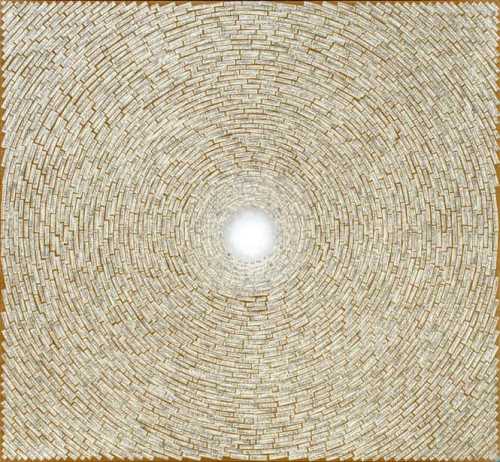
Endless Prayers (Rumi) I
Estimation
50,000,000,000﷼
83,333 USD
-
60,000,000,000﷼
100,000 USD
Realized Price
66,000,000,000﷼
110,000 USD
20%
Sale Date
Tehran
-
5 July 2024
